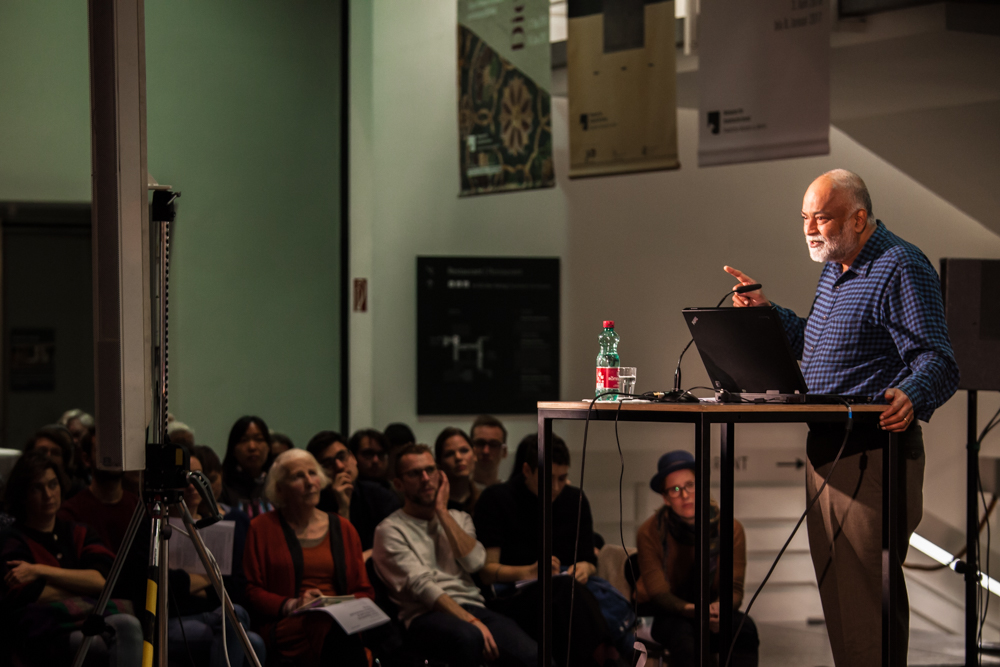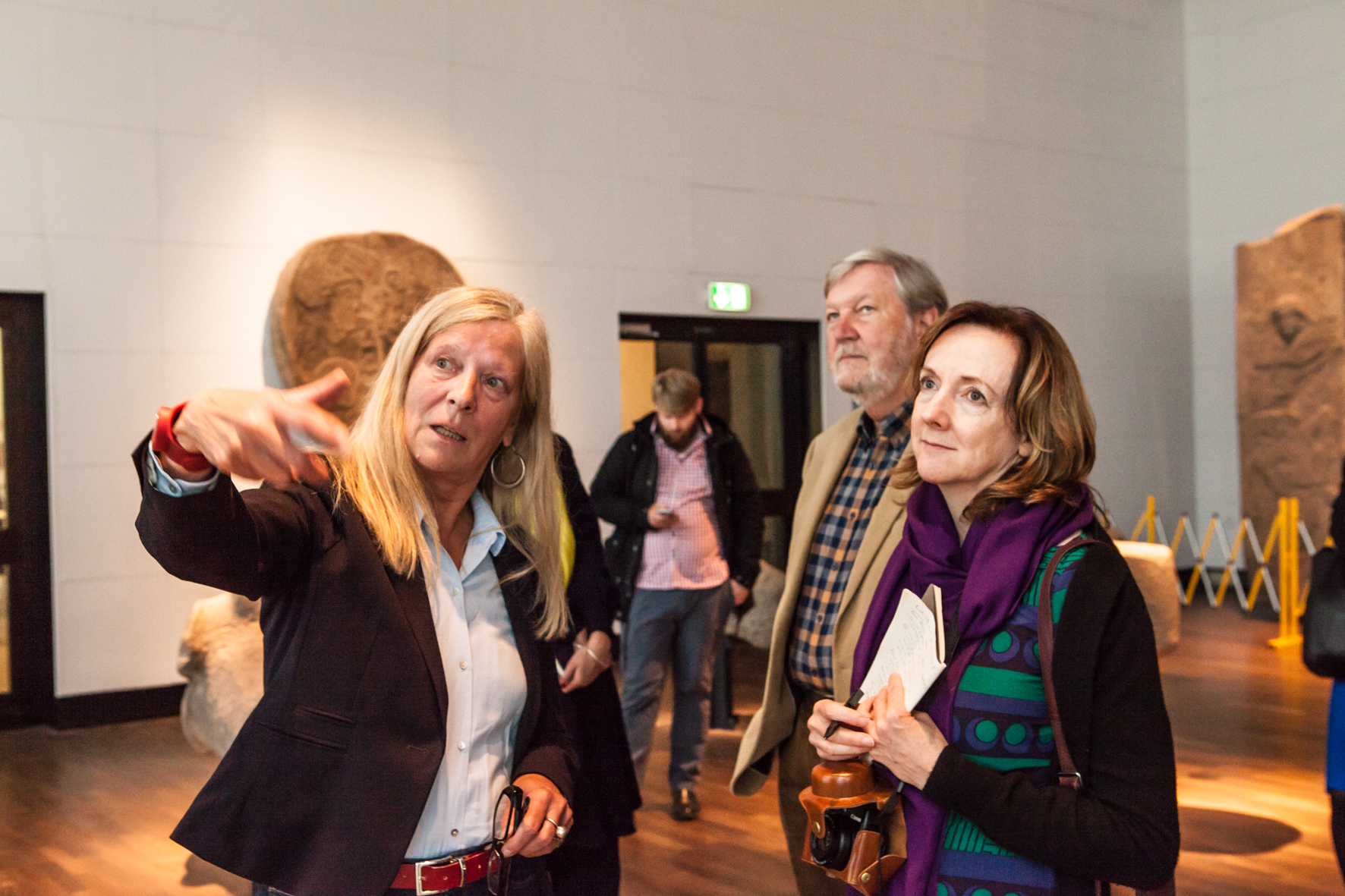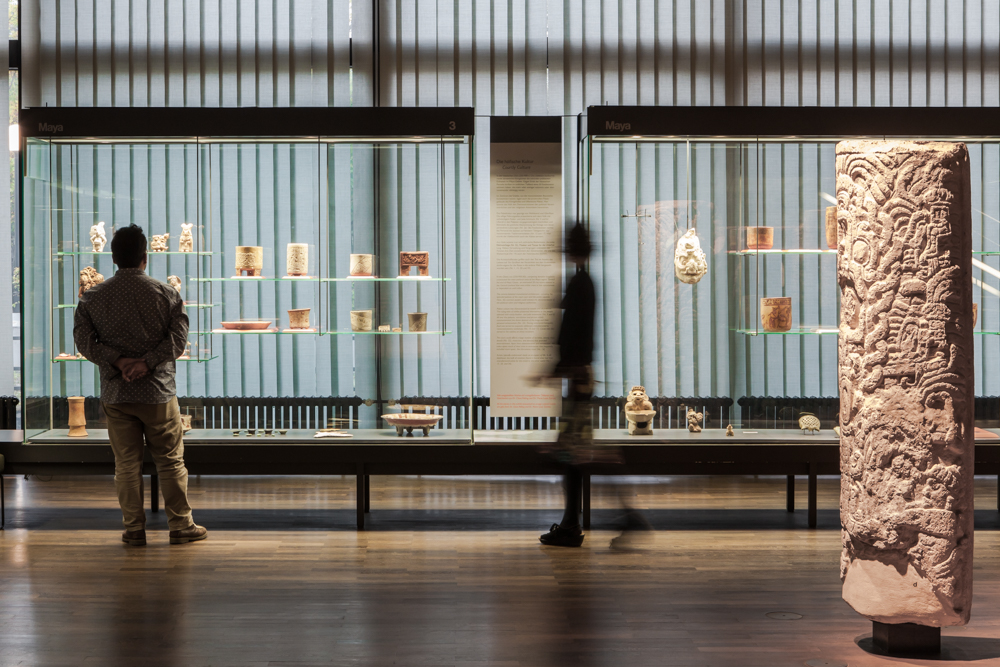When addressing the stuff the world is composed of, one would typically distinguish between things (that which is), objects (that which is made), and commodities (that which is exchangeable, or monetizable). For German philosopher Martin Heidegger the crucial distinction is to be found between “objects” and “things.” “Things,” he argues, can exist without subjects but “objects” are specific to a relation between the subject and the world it inhabits: “things” are an uncoded mode of materiality, objects a coded one.
In the lecture evening titled Thing, which took place at the Ethnologisches Museum in Berlin-Dahlem, Arjun Appadurai, Tony Bennett, and Sharon Macdonald tried to address the specific modality of being which defines the objects in ethnographic collections.
Opening the event, Appadurai described our object-world as a social and political one. Objects, Appadurai sustains, are mobile and animate, able to express purpose, desire, and telos, their aim. Currently, a plethora of disciplines, ranging from anthropology to robotics, acknowledge the entanglement of human and non-human actors, and attempt to describe their interactions. Referring to Igor Kopytoff’s The Cultural Biography of Things, Appadurai proceeded to argue that objects, though they are deliberately crafted for a specific purpose – be it political, utilitarian, religious, aesthetic, or a combination of several of these – tend to escape the social functions they were intended for. Socially speaking, objects live many lives: they may start as icons, and end up as heirlooms, luxury items, or even trash – the opposite route is also possible, howbeit less travelled.
Addressing objects from the vantage point of displacement, Appadurai argued that a vital part of their biography is lost whenever they are moved from their sites of origin to the museums which host them. Like migrants, he sustained, the things that end up in an ethnographic collection went through a journey whose motions impact their being, yet this “middle passage” is consistently bracketed out of the way in which they are characterized: Museums tend to focus on origin and context as markers of authenticity, brushing aside the convoluted entanglements of barter and plunder, or the many hands these objects might pass through in their haphazard odysseys until they reach their final destinies. He illustrated his point by selecting three artefacts from the ethnological collection: a painted bison robe, one of twelve, brought to Germany in the wake of an expedition, circa 1830; a royal throne mandu yenu from Cameroon, which was gifted to the German Emperor Wilhelm II by the King Njoya in 1908; and an engraved stela from Guatemala, whose origin dates somewhere between 500 and 900 AD.

In all cases, the museum’s catalogue fails to engage the circumstances under which these objects were uprooted and transported to Europe: Under which circumstances did a German expedition, comprising a prince and a painter, set sail to Missouri? Were the objects collected for the purpose of resale? What criteria presided over their selection? How ought one to address the entanglements of gift, trade, diplomacy, and empire? What logistics were required for the transport of such massive objects as a stone stela, and how were they harnessed? For Appadurai there would be something to be gained in investigating these journeys, which are tied to the complex dynamics of humanism and empire, making them part of the way these objects are narrated.
Comparing objects and migrants, Appadurai sketched a parallel between the quest for a “new” life and the artefacts’ ever-changing cultural biographies. Unlike artefacts however, migrants are seen as “tainted” or “damaged” by their histories – even when their past is seen as worthy of compassion, their future is seen as illegible and problematic. Rather than opposing migrant objects and human migrants, Appadurai proposed describing both as complex and interactive mixtures of stability and dislocation. Changing the way migrants are addressed would entail changing the broader cultural narratives and hierarchies of which ethnographic collections are part. His intentions notwithstanding, the metaphorical equivalence Appadurai sought to establish lends itself to appropriation. Probably unbeknownst to the speaker, French president François Hollande already announced plans to grant “asylum” to art and archeological treasures at risk of being destroyed, in an address at a UNESCO conference in Paris. Here, the equivalence between threatened heritage and threatened life is recuperated as a justification for the hoarding of riches, rather than a means to address the plight of their people.
Tony Bennett, who began by addressing the political issues surrounding ethnographic artifacts in Australian institutions, centered his talk around the interplay between the (immutable) material properties of things, and their (mutable) fluctuating, or context-related, meanings. How are we to capture that mobility, within the immobility of an institutional setting? If we are to interpret museum things as mutable immutable mobiles, Bennett argued, borrowing Bruno Latour’s concept of “immutable mobiles,” we must address their immutability as a function of an institutional discourse, its display policies, and their affiliated networks. Individual objects, once collected, ordered, and assembled together into the arrangement of relations, which is displayed inside museums, bring into being a plethora of rather more abstract entities: art, history and prehistory, national heritage, ethnography. In Bennett’s view, we ought to focus on the operations of cultural institutions, rather than on the objects under their custody, if we are to understand the modalities of objecthood, and by extension, of subjecthood, they engender.
Using the Encounters project of the National Museum of Australia as an example, Bennett argued that any attempt to restore an object’s “true meaning” simply adds another layer to the institutional mise en scène, via the staging of a re-socialization, rather than enabling a “clean break” from colonial history. A paradigmatic object, the Gweagal shield, points to the way contestation produces a re-ordering or re-assemblage of these objects, rather than a restoration of their original meaning: the shield, pierced by a bullet or spear, marks the first act of colonial aggression. It is, at once, the object-zero of imperial rule and the token for indigenous life “before contact.”

Reiterating Bennett’s view of museums as cultural agents, rather than simply cultural custodians, Sharon Macdonald recounted an anecdote: she was once rebuffed for calling “objects” the things curators typically refer to as “case-dressing,” the non-objects used as props in display cases.
An object, in the museum display context, is not just anything, but something which has an inventory number. The Museum of Things in Berlin, would, in Macdonald’s view, play a subversive role vis-à-vis these hierarchies by museumizing ordinary things, particularly, tasteless ones, and thereby highlighting the contingency pervading all forms of classification. Macdonald also pointed to the continuities (accumulation of riches) and discontinuities (absence of redistribution) between Potlatch ceremonies and museum ones, via the curious curatorial project in which the Museum of Things invited an artist to destroy the objects of his choosing. This event, she sustained, addresses the temporality of the museum and its secular staging of immortality, which, however artificious, remains antithetical to the fast pace of capitalist consumption. Museum storages could be described as cryogenic crypts, filled with dormant objects, whose plurivalence, however unsettling, is the curator’s task to wake up.
But curatorial approaches, however diverse they may be, must conform to the institutional congruity of the museum-form. And it is this congruity of form that regulates, and ultimately negates, cultural difference. Rather than focus on “thingness” as the locus of resistance, one should perhaps focus on the specific form of mediality, which constitutes an “artefact.” As Adorno put it in Negative Dialectics (1973), “the thingness of the world is illusory, it tempts the subject to ascribe to the things themselves the social conditions of their production”: the so-called resistance of the object – to refer back to Tony Bennett in the guise of a conclusion – is in fact the resistance one narrative opposes to another one.
